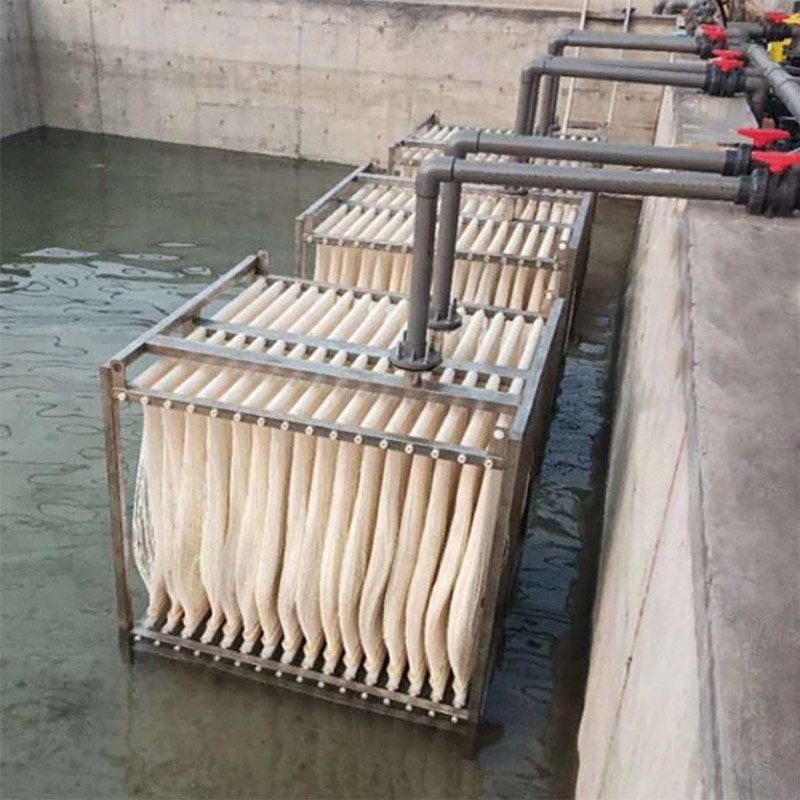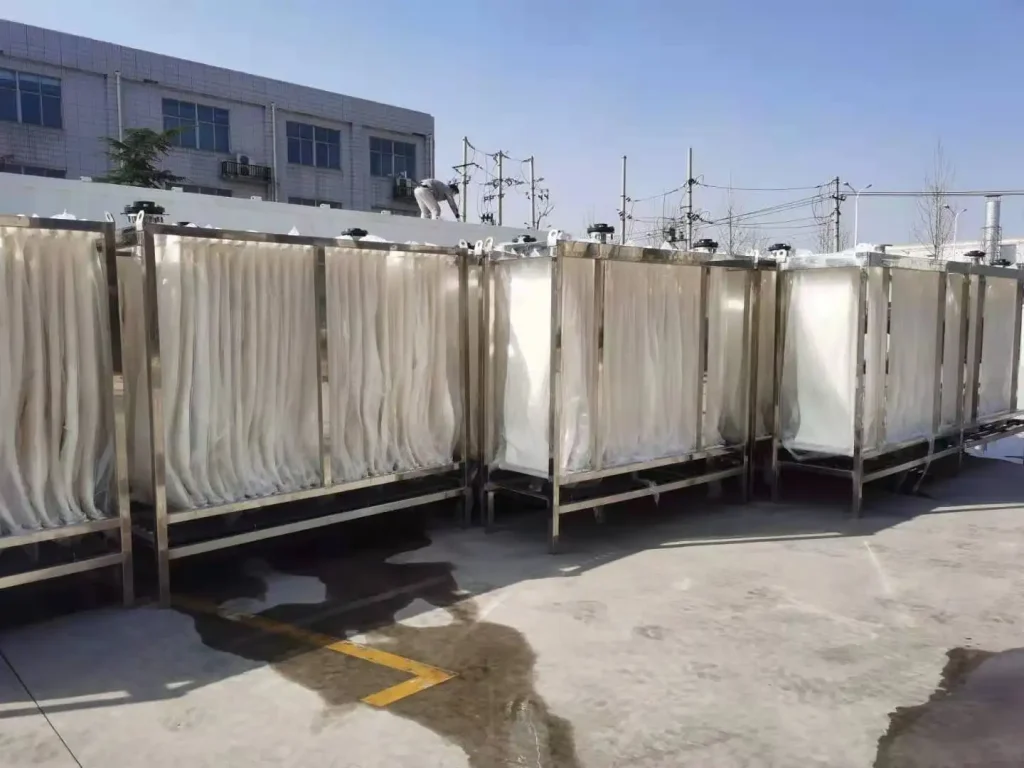What is MBR Membrane ?

Membrane Bioreactor (MBR)
Membrane Bioreactor (MBR) is an advanced wastewater treatment and reuse technology that integrates membrane separation technology with biological processes.
Table of Contents


1. Basic Principles
Biological Treatment Section
In the MBR system, microorganisms (such as bacteria and fungi) play a crucial role. Wastewater first enters the biological reactor, where microorganisms decompose organic pollutants under aerobic or anaerobic conditions. For example, under aerobic conditions, microorganisms oxidize organic substances (e.g., carbohydrates, proteins, and fats) into carbon dioxide and water while reproducing. These microorganisms typically attach to activated sludge, forming biologically active flocs.
The microbial community in activated sludge is a complex ecosystem where different microorganisms work together. Some bacteria break down complex organic macromolecules into smaller molecules, which are then further decomposed by other microorganisms into inorganic substances.
Membrane Separation Section
The membrane module is the core component of an MBR. It effectively separates treated water from activated sludge in the bioreactor. The separation process is primarily based on physical sieving, where the membrane's pore size determines the substances that can pass through. Generally, ultrafiltration or microfiltration membranes used in MBRs have pore sizes ranging from 0.01 to 0.4 μm.
This fine pore size can block activated sludge, bacteria, and large organic molecules, allowing only water molecules and some small substances (e.g., inorganic salts) to pass. For instance, after membrane separation, the treated water can achieve high quality standards for direct reuse or discharge, while the retained activated sludge remains in the bioreactor for further treatment.
2. System Components
Biological Reactor
The biological reactor is where microorganisms grow and carry out biological reactions. It can be an improved version of traditional activated sludge reactors, such as plug-flow or completely mixed reactors. Its design must ensure sufficient contact between wastewater and microorganisms, as well as favorable hydraulic conditions. For example, in a plug-flow reactor, wastewater flows from one end to the other, allowing pollutants to be gradually decomposed by microorganisms during the flow. This method exposes microorganisms to varying substrate concentrations, improving treatment efficiency.
Membrane Module
Membrane modules come in various types, including flat sheet, hollow fiber, and tubular membranes:
- Flat Sheet Membranes: Consist of flat membrane sheets and support plates. They are simple to clean and maintain.
- Hollow Fiber Membranes: Made of numerous hollow fibers, offering a high surface area-to-volume ratio for large treatment capacities in compact spaces.
- Tubular Membranes: Known for excellent anti-fouling properties, suitable for treating wastewater with high concentrations of suspended solids or large organic molecules.
Aeration System (for Aerobic MBRs)
The aeration system provides sufficient dissolved oxygen for microorganisms to sustain normal metabolic activities. Aeration also facilitates mixing, ensuring thorough contact between wastewater and activated sludge. For instance, micro-bubble aerators installed at the bottom of the reactor produce fine bubbles that transfer oxygen to the microorganisms and circulate activated sludge, preventing sedimentation.
Cleaning System
Membranes are prone to fouling during operation, necessitating regular cleaning. Cleaning systems include:
- Physical Cleaning: Uses methods like water flushing or air backwashing. For example, high-pressure water jets can remove loose debris on the membrane surface.
- Chemical Cleaning: Involves chemical agents (e.g., acids, alkalis, oxidants) to dissolve or decompose fouling on the membrane surface. For instance, citric acid can clean scale deposits formed by calcium and magnesium ions.
3. Advantages
High Water Quality
MBR-treated water achieves excellent quality, effectively removing suspended solids, bacteria, viruses, and most organic pollutants. For example, for municipal wastewater, MBR can reduce COD to below 30 mg/L, and achieve near-zero discharge of suspended solids, meeting stringent reuse standards such as for landscape irrigation or industrial cooling.
Small Footprint
Thanks to the efficiency of membrane separation, MBR systems eliminate the need for large secondary clarifiers typical of traditional processes. High microbial concentrations in the bioreactor improve treatment efficiency and reduce reactor size. MBR systems typically occupy only 1/3 to 1/2 the area of conventional systems.
Low Sludge Production
As microorganisms are retained in the bioreactor under stable growth conditions, they more efficiently decompose organic pollutants, resulting in lower sludge production. Compared to traditional activated sludge processes, MBR systems can reduce sludge yield by 30%-50%, lowering sludge treatment and disposal costs.
4. Disadvantages and Challenges
High Cost
MBR systems have a high initial investment cost due to expensive membrane modules. Membranes have a limited lifespan and require periodic replacement, further increasing operational costs. Additionally, energy consumption (e.g., for aeration and membrane filtration) is relatively high during operation.
Membrane Fouling
Membrane fouling is a key issue in MBR applications. Over time, organic matter, microorganisms, and inorganic substances in wastewater can deposit and adsorb on membrane surfaces and pores, reducing flux and affecting treatment efficiency. Controlling and cleaning fouling remains a critical area of research.
Membrane bioreactors have promising applications in wastewater treatment and water reuse. With ongoing technological advancements and cost reductions, they are expected to gain wider adoption.
Hi, I am the author of this article and I have been working in this field for more than 8 years. If you want to know about water treatment related knowledge and products, please feel free to ask me any questions.

